OUT OF SIGHT A JOURNEY INTO THE GLOBAL HIV/AIDS EPIDEMIC AFTER THIRTY YEARS
« Stigma against people living with HIV and those at higher risk of infection persists. This is a human rights violation that also hampers our ability to address AIDS. Stigma, discrimination, punitive laws, gender inequality and violence continue to inflame the epidemic and thwart our strongest efforts to ‘get to zero’. »
« A vigorous civil society is central to holding partners and countries to account for honoring the commitments they make. People living with HIV, people at higher risk of HIV infection, women and young people must therefore be present at the tables where decisions are made. […] Getting to zero discrimination requires us to do more than protect people who are vulnerable to HIV – we must empower them. »
Out of Sight is a photographic journey into the global HIV/AIDS epidemic after 30 years. Thailand, Mozambique, Brazil, Ukraine and the U.S. are the countries where we've investigated the epidemic between 2011 and 2013. The project is meant to be a visual and narrative prevention tool, with easy-to-read infographics and insights.
Even though globally many are acting as HIV and AIDS are no longer the threat they were when it all began, the epidemic is not over yet. Throughout the years, tremendous progress has been done in stabilizing or reducing rates of new infections but, until now, the global response has hinged on the largesse of a relatively small handful of wealthy donor countries. Today though, in the current economic climate, their commitment is unpredictable and undependable, yet millions of lives depend on them. The goals of zero new infections, zero discrimination and zero AIDS related deaths, as set by UNAIDS, might receive an unnecessary setback because of reckless economic and monetary policies that have led to the actual crisis. Too many Governments are not honoring their commitments to provide an effective response to the epidemic, including failure to safeguarding human rights, demanding fair drug prices and lowering barriers to obtaining low-cost drugs and commodities in the current TRIPS agreement. Besides, what is even more worrisome is that efforts to discover newer, less toxic medicines are waning as pharmaceutical companies seek other more lucrative markets.
No HIV response can be truly effective unless it combats discrimination and exclusion. Punitive laws and stigma continue to place roadblocks for people living with HIV/AIDS, who continue to experience social, vocational or family exclusion, loss of employment, refusal of care and involuntary disclosure. Growing evidence links gender-based violence and discrimination with the spread of HIV, underscoring the importance of reaching adolescents through comprehensive prevention programs. While teenagers are the most uninformed, women, on the other hand, are still the most vulnerable. If youth participation becomes crucial in the digital era of social networking to push the Aids response to a whole new level, reaching those who belong to the most exposed populations is more than ever absolutely necessary in order to help them in demanding, delivering and evaluating HIV services.
Fighting for prevention, treatment, medical care and human rights for people living with HIV/AIDS is maybe the most pressing health care justice issue today. Any time there is misunderstanding about AIDS, the idea that people living with HIV/AIDS have a different set of rights than the uninfected gets stronger. If awareness and prevention programs are key factors to succeed in the fight against the epidemic, essential drugs are humanitarian products and must be made universally much more accessible. In fact, even though the disease has potentially become a chronic and a manageable one, a cure is still far to be found. AIDS remains the most stigmatized disease in human history and after 30 years into this very complex epidemic the gains are real but still too fragile.
INFOGRAPHICS THE GLOBAL HIV/AIDS EPIDEMIC AT A GLANCE
The following infographics represent a compilation of key public health indicators for the 194 United Nations Member States, based on the best estimates and on evidence available in 2013. The estimates are subject to considerable uncertainty, especially for countries with weak statistical and health information systems where the quality of underlying empirical data can be limited.
The infographics are presented for informational purposes only. Every attempt has been made to ensure that the information contained herein is accurate. Figures and percentages are based on latest available data as collected by the World Health Organization (WHO) and the Joint United Nations Programme on HIV/AIDS (UNAIDS) and published on their respective websites.
ACKNOWLEDGMENTS 2011-2013
OUT OF SIGHT wouldn’t have been possible without the strength and the great courage of all those who decided to expose themselves and let me enter into their lives with my camera. To all of them go my utmost gratitude and respect.
I am very thankful to the World Health Organization for supporting my project. I would like to thank in particular Dr. Mario Merialdi and Dr. Elisa Scolaro and all who helped at the Department of Reproductive Health and Research.
A special thank goes as well to all those who helped me relentlessly over the last three years. In particular I’m very grateful to Eva Scaini for her love, work and patience, to Alberto D’Argenzio, Giulia Minoia, Nicola Scevola and Emanuele Giudice for their true commitment and friendship and to Gaia Light, my editor, for her enthusiasm and passion. Without Gaia’s insight and vision this project wouldn’t be what it is today.
Finally, while on the field or at home, I have been supported in many different ways by a large number of people, most of whom are working to make real and persistent improvements in the lives of millions HIV+ people. They’ve offered their skills, their knowledge and their time to help make this project happen. For this I am very grateful to:
in Italy:
Arturo and Carla Fontana, Paolo Lecca, Stefano De Grandis, Massimo Di Nonno, Luca
Nizzoli Toetti, Cesare Ventura, Valeria Gulotta, Plantu, Rosa Garofalo, Benedetta
Treccani, Lavinia Galli, Roberto Cagliero, and Maurizio Garofalo.
in Thailand:
Dario Pignatelli, Lorenzo Santucci, Khun Promboon, Jeab Jem, Khun Kasina, Khun
Prasong, Thirdchai "Oat" Sattayapanich, Oy, Richard Bunch, Suwan Arjwichai, Tak,
Suphattra Buajong, Jeerakan Janhom, Khun Sasiwimol and Bunruan Sopa, Max and
Neera Pa, Ma-Meow and Nimit Tienudom, Diomp, Khun Danny and Owie, Phu, Khun
Usanee, Jazz Lhaokunlavanich and Karuna Buakamsri.
in Mozambique:
Dorien Rhebergen (in loving memory), Cathy Michael, Lise Ellyin and Beatriz Manriquez
Rocha, Alicia Carbonell, Gloria Moreira and Hilde De Graeve, Edna Viegas, Evy Van
Weezendonk, Donata Galloni e Anita Antonich, Susanna Ceffa, Michelle Wallace, Luisa
Brumana e Luigi D'Aquino, Maria Laura Mastrogiacomo Mbow, Todd Wofchuck, Beppe
Saia and Kissange Vedor, Samuele Silva and Stefano Gasparini.
in Brazil:
Joana Gloria Curvo, Christian Tragni, Dario De Dominicis, Shari Anne El-Dash, Tadeu,
Carlos Starling, Roseli Tardelli and Lucas Bonanno, Silvia Almeida, Ricardo Tapajos and
Mario Warde, Maria Regina Torloni, Álvaro Claudino, Alexandra Marques, Beto do Jesus,
Sheila Souza, Alexander Vinicius de Mello, Aila Mota Santana, Angela Karine Queiroz e
Adriana Paula da Silva, Luiz Cardoso, Izabela Voieta, Joaquim do Prado Spagnuolo,
Francisco Ivanildo Oliveira and Emi Shimma.
in Ukraine:
Marianna Zaichykova, Ksenia Kuleshova, Andriy Andrushkiv, Olga and Iana, Tatyana,
Sergey Kostin and Inna Nikiforova, Victoria Rizplova and Lilia Osipova, Volodymyr
Kurpita, Natalia Matyas, Matushka Elisabeth, Olena, Anton Sak, Anastasia Melnikova,
Olena Stryzhak, Olia Pompush.
in the US:
Federica Mian and Shadi Shahrokhi, Alessandro Cosmelli, Dr. Ranieri Guerra, Eric
Sawyer, Reginald T. Brown, Jim Eigo, Stephen Helmke, Brandon Cuicchi, all the activists
at ACT UP NY, David France, Dorcas Baker and Carolyn Massey, Melissa Donze, Katy
Rubin, Dr. Susan Morgello, Daniel Tietz, Mark Brennan-Ing, Luis Scaccabarrozzi, Stephen
Karpiak, Mark Milano, Charles King, Howard Grossman, Regina Quattrochi, Jeannette
Ruffins and Sheila Johnson, Nora Grannell, Melissa Alfonso, Joseph Terrill, Socrates A.
Caba, Mariah Lopez, Kate Barnhart, Alfredo Bini, Patricia Bilotti and Stephanie Reid.














